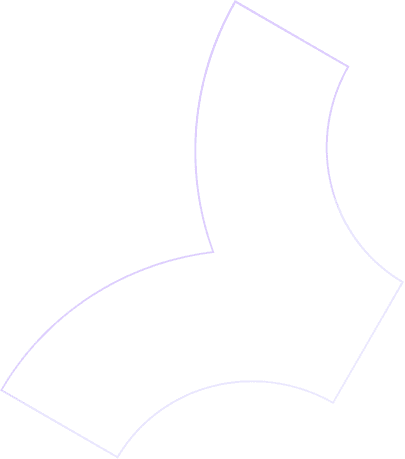How To Build a Website For Pest Control: Danny Leibrandt

Author:

Your website is your digital storefront. If you had a brick-and-mortar pest control shop and people walked in to see a messy, confusing layout with employees in ragged uniforms, you wouldn’t expect them to buy anything. Your website is the same way. It's where potential customers "walk in," and you want it to make a strong, professional first impression that also converts traffic into leads.
In this guide, I’ll break down everything you need to know about setting up a high-performing pest control website.
Why Your Website Matters
Your site is more than a digital business card. It helps you:
Build brand authority
Show up in Google search
Convert cold visitors into paying customers
Design and SEO aren’t at odds. You need both. A premium brand needs a premium-looking site that also performs well in search.
Must-Have Pages for Your Pest Control Website
Here are the foundational pages every pest control website should have:
Homepage: Your homepage is usually where people land from your mailers, trucks, or word-of-mouth. It should be visually clean and brand-aligned.
About Page: Tells your story and builds trust.
Contact Page: Include phone, email, a form, and ideally a click-to-call button.
404 Page: Helps with user experience and SEO.
Privacy Policy & Terms: Required by Google. Generate these easily using AI tools.
Then come your money pages:
Location Pages: One for each city or town you serve. These target keywords like "Pest Control Chicago" or "Exterminator Northbrook."
Service Pages: One for each core service (e.g., mosquito control, termite control, ant removal).
Pest Library (optional): Acts as an SEO authority builder. Pages on ants, spiders, cockroaches, etc.
Blog: Make sure all blog posts are organized in a
/blog/subfolder for SEO structure.
One Concept Per Page
This is a critical SEO principle. Each page should target a single topic:
"Pest Control Chicago," "Chicago Pest Control," and "Chicago Exterminator" all go on the same page.
But "Pest Control Northbrook" deserves its own separate page.
Google wants one clear concept per page so it can serve the most relevant result.
Common SEO Mistakes to Avoid
Trying to rank the homepage for everything: Focus your homepage on your brand and use other pages for keywords.
Duplicate content: Don’t create multiple pages for the same concept.
No internal linking: Every sub-page should link back to its category and related pages.
Slow page speed: Use PageSpeed Insights (search for it) and aim for <3 seconds on mobile.
Hosting and Tools for Better Performance
To keep your website fast and SEO-friendly:
Platform: Build on WordPress
Hosting: Use WP Engine
Speed/Security: Add Cloudflare
Plugins: Use RankMath or Yoast SEO for metadata. Use WP Rocket and an image compressor for load time.
Heavy images are the #1 issue I see. Resize and compress them.
Why Mobile Optimization Matters
60–70% of pest control searches happen on mobile. And mobile is always slower. If your site isn’t optimized for mobile load speed and layout, you’re losing customers every day.
Structuring Your Site for SEO
Use category-based architecture:
Service category pages: e.g.
/termite-control/Location service pages: e.g.
/termite-control/chicago-il/Pest library: e.g.
/pest-library/ants/
Google understands structure. This signals topical authority and relevance. Then link each child page back to its category to reinforce the internal architecture.
Final Thoughts
Your website isn’t just for show. It’s one of the most important parts of your pest control business. Get it right and it becomes a growth engine that runs 24/7.
Start with the basics. Build the right pages. Structure it logically. Optimize for speed and mobile. Track performance. And if you need help, reach out. This is what we do every day at Pest Control SEO.
More on SEO For Pest Control

Danny Leibrandt
Co-Founder
Danny Leibrandt is the founder of Pest Control SEO and host of the Local Marketing Secrets podcast. He's helped many pest control companies with SEO, ranging from $10k to $100M+ in annual revenue. He's a recognized speaker in the digital marketing space and is now a published author with his new book, "The Complete Guide To Pest Control SEO."
How To Build a Website For Pest Control: Danny Leibrandt

Author:

Your website is your digital storefront. If you had a brick-and-mortar pest control shop and people walked in to see a messy, confusing layout with employees in ragged uniforms, you wouldn’t expect them to buy anything. Your website is the same way. It's where potential customers "walk in," and you want it to make a strong, professional first impression that also converts traffic into leads.
In this guide, I’ll break down everything you need to know about setting up a high-performing pest control website.
Why Your Website Matters
Your site is more than a digital business card. It helps you:
Build brand authority
Show up in Google search
Convert cold visitors into paying customers
Design and SEO aren’t at odds. You need both. A premium brand needs a premium-looking site that also performs well in search.
Must-Have Pages for Your Pest Control Website
Here are the foundational pages every pest control website should have:
Homepage: Your homepage is usually where people land from your mailers, trucks, or word-of-mouth. It should be visually clean and brand-aligned.
About Page: Tells your story and builds trust.
Contact Page: Include phone, email, a form, and ideally a click-to-call button.
404 Page: Helps with user experience and SEO.
Privacy Policy & Terms: Required by Google. Generate these easily using AI tools.
Then come your money pages:
Location Pages: One for each city or town you serve. These target keywords like "Pest Control Chicago" or "Exterminator Northbrook."
Service Pages: One for each core service (e.g., mosquito control, termite control, ant removal).
Pest Library (optional): Acts as an SEO authority builder. Pages on ants, spiders, cockroaches, etc.
Blog: Make sure all blog posts are organized in a
/blog/subfolder for SEO structure.
One Concept Per Page
This is a critical SEO principle. Each page should target a single topic:
"Pest Control Chicago," "Chicago Pest Control," and "Chicago Exterminator" all go on the same page.
But "Pest Control Northbrook" deserves its own separate page.
Google wants one clear concept per page so it can serve the most relevant result.
Common SEO Mistakes to Avoid
Trying to rank the homepage for everything: Focus your homepage on your brand and use other pages for keywords.
Duplicate content: Don’t create multiple pages for the same concept.
No internal linking: Every sub-page should link back to its category and related pages.
Slow page speed: Use PageSpeed Insights (search for it) and aim for <3 seconds on mobile.
Hosting and Tools for Better Performance
To keep your website fast and SEO-friendly:
Platform: Build on WordPress
Hosting: Use WP Engine
Speed/Security: Add Cloudflare
Plugins: Use RankMath or Yoast SEO for metadata. Use WP Rocket and an image compressor for load time.
Heavy images are the #1 issue I see. Resize and compress them.
Why Mobile Optimization Matters
60–70% of pest control searches happen on mobile. And mobile is always slower. If your site isn’t optimized for mobile load speed and layout, you’re losing customers every day.
Structuring Your Site for SEO
Use category-based architecture:
Service category pages: e.g.
/termite-control/Location service pages: e.g.
/termite-control/chicago-il/Pest library: e.g.
/pest-library/ants/
Google understands structure. This signals topical authority and relevance. Then link each child page back to its category to reinforce the internal architecture.
Final Thoughts
Your website isn’t just for show. It’s one of the most important parts of your pest control business. Get it right and it becomes a growth engine that runs 24/7.
Start with the basics. Build the right pages. Structure it logically. Optimize for speed and mobile. Track performance. And if you need help, reach out. This is what we do every day at Pest Control SEO.
More on SEO For Pest Control

Danny Leibrandt
Co-Founder
Danny Leibrandt is the founder of Pest Control SEO and host of the Local Marketing Secrets podcast. He's helped many pest control companies with SEO, ranging from $10k to $100M+ in annual revenue. He's a recognized speaker in the digital marketing space and is now a published author with his new book, "The Complete Guide To Pest Control SEO."
How To Build a Website For Pest Control: Danny Leibrandt

Author:




Your website is your digital storefront. If you had a brick-and-mortar pest control shop and people walked in to see a messy, confusing layout with employees in ragged uniforms, you wouldn’t expect them to buy anything. Your website is the same way. It's where potential customers "walk in," and you want it to make a strong, professional first impression that also converts traffic into leads.
In this guide, I’ll break down everything you need to know about setting up a high-performing pest control website.
Why Your Website Matters
Your site is more than a digital business card. It helps you:
Build brand authority
Show up in Google search
Convert cold visitors into paying customers
Design and SEO aren’t at odds. You need both. A premium brand needs a premium-looking site that also performs well in search.
Must-Have Pages for Your Pest Control Website
Here are the foundational pages every pest control website should have:
Homepage: Your homepage is usually where people land from your mailers, trucks, or word-of-mouth. It should be visually clean and brand-aligned.
About Page: Tells your story and builds trust.
Contact Page: Include phone, email, a form, and ideally a click-to-call button.
404 Page: Helps with user experience and SEO.
Privacy Policy & Terms: Required by Google. Generate these easily using AI tools.
Then come your money pages:
Location Pages: One for each city or town you serve. These target keywords like "Pest Control Chicago" or "Exterminator Northbrook."
Service Pages: One for each core service (e.g., mosquito control, termite control, ant removal).
Pest Library (optional): Acts as an SEO authority builder. Pages on ants, spiders, cockroaches, etc.
Blog: Make sure all blog posts are organized in a
/blog/subfolder for SEO structure.
One Concept Per Page
This is a critical SEO principle. Each page should target a single topic:
"Pest Control Chicago," "Chicago Pest Control," and "Chicago Exterminator" all go on the same page.
But "Pest Control Northbrook" deserves its own separate page.
Google wants one clear concept per page so it can serve the most relevant result.
Common SEO Mistakes to Avoid
Trying to rank the homepage for everything: Focus your homepage on your brand and use other pages for keywords.
Duplicate content: Don’t create multiple pages for the same concept.
No internal linking: Every sub-page should link back to its category and related pages.
Slow page speed: Use PageSpeed Insights (search for it) and aim for <3 seconds on mobile.
Hosting and Tools for Better Performance
To keep your website fast and SEO-friendly:
Platform: Build on WordPress
Hosting: Use WP Engine
Speed/Security: Add Cloudflare
Plugins: Use RankMath or Yoast SEO for metadata. Use WP Rocket and an image compressor for load time.
Heavy images are the #1 issue I see. Resize and compress them.
Why Mobile Optimization Matters
60–70% of pest control searches happen on mobile. And mobile is always slower. If your site isn’t optimized for mobile load speed and layout, you’re losing customers every day.
Structuring Your Site for SEO
Use category-based architecture:
Service category pages: e.g.
/termite-control/Location service pages: e.g.
/termite-control/chicago-il/Pest library: e.g.
/pest-library/ants/
Google understands structure. This signals topical authority and relevance. Then link each child page back to its category to reinforce the internal architecture.
Final Thoughts
Your website isn’t just for show. It’s one of the most important parts of your pest control business. Get it right and it becomes a growth engine that runs 24/7.
Start with the basics. Build the right pages. Structure it logically. Optimize for speed and mobile. Track performance. And if you need help, reach out. This is what we do every day at Pest Control SEO.
More on SEO For Pest Control

Danny Leibrandt
Co-Founder
Danny Leibrandt is the founder of Pest Control SEO and host of the Local Marketing Secrets podcast. He's helped many pest control companies with SEO, ranging from $10k to $100M+ in annual revenue. He's a recognized speaker in the digital marketing space and is now a published author with his new book, "The Complete Guide To Pest Control SEO."